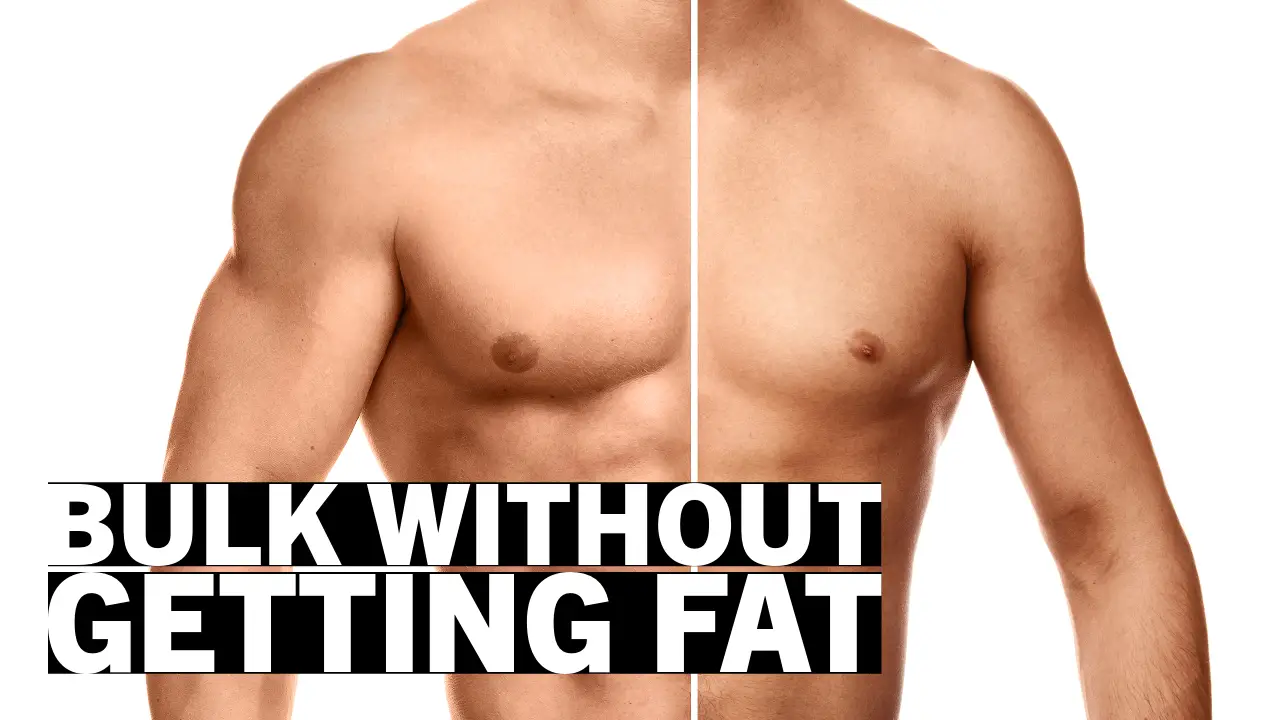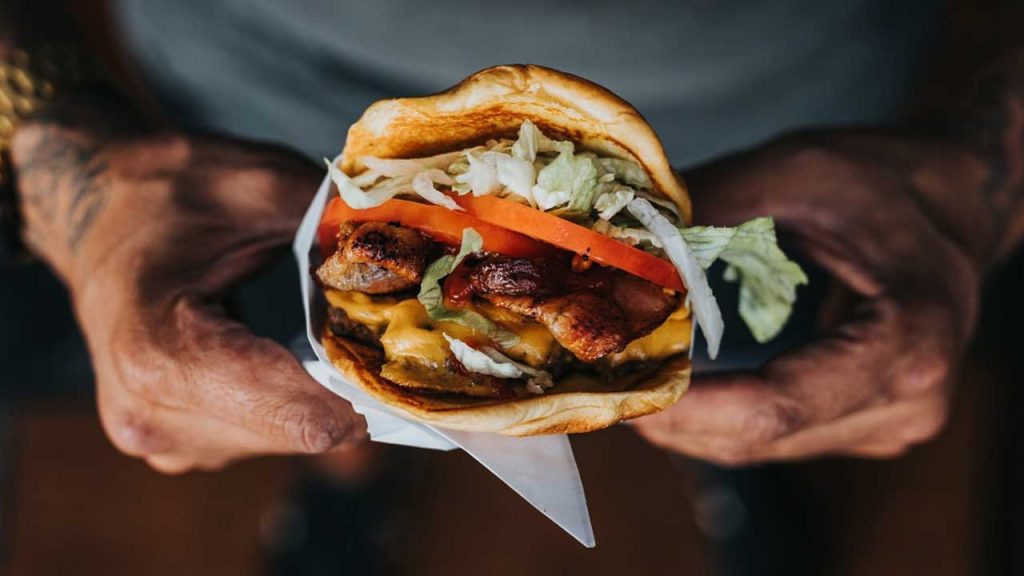How to Bulk Without Getting Fat: Top Tips for Smart Gains

ListedFit is reader-supported. When you buy through links on our site, we may earn a small commission.
Bulking up without gaining unwanted fat is often a major concern for many fitness enthusiasts.
Building muscle mass while maintaining a lean physique can be a challenging task, but it is not impossible.
By following a well-planned strategy tailored to your body’s requirements, you can achieve your desired fitness goals.
Quick Summary
The foundation of any successful bulking journey lies in understanding your body’s nutritional needs, incorporating the right types of exercise, and allowing your muscles adequate rest.
With the right approach, you can bulk up without the fear of accumulating belly fat and enjoy the rewards of your hard work.
Key Takeaways
- Being mindful of your nutrient intake will help you achieve optimal muscle gain without gaining fat.
- A combination of compound resistance exercises and varying workout routines is crucial for lean bulking.
- Emphasising the importance of rest and recovery is key to navigating through bulking and cutting phases successfully.
Table of Contents
The Basics of Bulking
Bulking is all about gaining muscle mass, and to do that, you need to focus on two essential factors: nutrition and training. You want to increase your weight and muscle without adding unwanted body fat. Let’s cover the basics to keep your gains lean and clean.
First up, calories. You need to consume more calories than you burn, so you have enough energy for those intense workouts and your body can grow. Aim for a calorie surplus of around 250-500 extra calories per day. However, bear in mind that excessive calorie consumption can lead to fat gain, so moderation is key here.
Next, let’s look at protein. Protein is crucial for muscle repair and growth, so you’ll want to be eating enough of it. Aim for around 1.2 to 1.7 grams of protein per kilogram of body weight. Include high-quality proteins, such as lean meats, fish, eggs, and dairy products, in your diet.
Remember, muscle growth isn’t linear. It takes time and consistent effort, but following these fundamental principles will help maximise your gains.
Training is the next vital component for bulking. Focus on compound exercises that target multiple muscle groups at once. These might include squats, deadlifts, bench presses, and rows. Aim to train each muscle group twice per week to help support the growth of new muscle.
While bulking, it’s natural to experience some weight gain. But keep an eye on your progress, as you want the majority of that gain to be muscle, not fat. It’s normal to gain a small amount of fat alongside muscle but adjust your calorie intake or exercise regime if you notice excessive fat gain.
How Many Calories Should I Aim For?

When it comes to bulking without getting fat, it’s essential to find the right balance in your caloric intake. Consuming too many calories may lead to unwanted fat gain, while too few calories can hinder muscle growth. So, let’s discuss how to calculate the ideal calorie intake for your bulking needs.
First, you need to determine your maintenance calorie intake, which is the number of calories you require to maintain your current weight.
Use this TDEE Calculator to work out how many calories you need to maintain your current eight. Then add 200/300 calories per day to bulk up.
You can do this by tracking your daily caloric intake and monitoring your weight over two weeks. If your weight stays constant, congratulations, you’ve found your maintenance caloric intake!
Now that you know your maintenance intake, it’s time to add a calorie surplus to promote muscle growth. Experts recommend aiming for a surplus of 200-300 calories above your maintenance level. This moderate increase should be enough to fuel muscle growth without causing significant fat gain.
Remember, even though you’re bulking, maintaining a healthy balance of macronutrients and prioritising nutrient-dense foods will make your journey even more effective.
Keep in mind that everyone’s body is different, so it’s crucial to listen to your body and track your progress. If you find that you’re gaining weight too quickly or slowly, adjust your caloric intake accordingly. Incremental adjustments of 100-200 calories at a time should suffice.
Lastly, don’t forget about your macronutrient distribution. The ideal ratio for bulking consists of:
- Protein: 0.75 grams per pound of body weight
- Carbohydrates: Remainder of your caloric intake after accounting for protein and fat
- Fat: 0.3-0.4 grams per pound of body weight
How Do I Bulk Without Getting Fat – The Key Points

When bulking up without gaining excess fat, it’s important to focus on a few key factors. Let’s dive into the necessary steps without further ado.
1. Calorie Surplus: To gain muscle weight, you should aim to eat at a calorie surplus, meaning you consume more calories than you burn. However, make sure that it’s a moderate surplus that will allow muscle gain without adding too much body fat.
2. Protein Intake: Ensuring proper protein intake is essential for muscle growth. Aim for around 0.75 grams of protein per pound of body weight per day. This will help your muscles rebuild and grow after workouts.
3. Training Intensity: In order to stimulate muscle growth, your workouts should be intense and focused on resistance training. Lift heavy weights while maintaining proper form, and progressively increase the volume of the sessions.
4. Cardiovascular Exercise: Don’t forget about cardio. Incorporating regular cardiovascular exercises helps maintain your fitness level and keeps excess body fat at bay. This can be done through activities like running, swimming, or cycling.
5. Sleep and Recovery: Sufficient rest and recovery are crucial for muscle growth. Aim for at least 7-8 hours of sleep per night and give your muscles time to recover between workout sessions.
By putting these key points into practice, you can successfully bulk up without gaining unwanted fat.
Importance of Downtime and Rest
We all know that working out is essential for bulking up, but believe it or not, downtime and rest play an equally important role. Let’s dive into the reasons why rest is vital in your quest to bulk without getting fat.
Firstly, your muscles need time to recover and grow. When you exercise, particularly while weightlifting, you cause micro-tears in your muscle fibres. During rest periods, your body repairs these damaged fibres, and that’s when muscle growth occurs. So, if you’re not giving your muscles enough time to recover, you’re putting the brakes on your progress.
Getting sufficient sleep is also crucial for your bulking journey. You see, when you’re catching some Z’s, your body produces growth hormone, which is essential for muscle repair and growth. Aiming for 7-9 hours of quality sleep each night should be a priority if you’re serious about bulking without gaining fat.
Now, you might think that more is better when it comes to exercise, but in reality, overtraining can hinder your progress and lead to unwanted fat gain. When you’re overworking your body, it increases cortisol levels, which can trigger fat storage, especially around your midsection. So, remember, it’s all about balance. Plan at least two rest days a week for optimal muscle gains.
Lastly, don’t forget that downtime and relaxation contribute to your mental well-being as well. Achieving a balanced lifestyle and managing stress is essential for staying on track with your goals. So, don’t feel guilty about enjoying some downtime – it’s just as crucial as your workouts.
Navigating the Bulking and Cutting Phases
What is Cutting?
Cutting is a phase in bodybuilding and fitness where you aim to reduce your body fat percentage while maintaining your muscle mass. During this period, you’ll follow a strict diet plan, focusing on macronutrient ratios, and sometimes increasing cardio workouts. The main goal is to showcase your hard-earned muscles and create a more chiselled and defined physique.
Leaning Bulk vs. Cut
When it comes to gaining strength and muscle mass, you have two main options: a lean bulk or a cut. A lean bulk involves consuming a slight caloric surplus to promote muscle growth while minimising fat gain. Lean bulking prioritises progress over time, achieving a balanced increase in bodyweight while maintaining a relatively low body fat percentage.
On the other hand, a cut focuses on reducing body fat while preserving muscle mass. In this phase, you’ll lower your calorie intake, enabling your body to shed fat, which will accentuate the underlying muscles. Keep an eye on your strength levels and protein synthesis during cutting, as it’s a delicate balance to maintain muscle while in a caloric deficit.
Transitioning Between Phases
Understanding how to transition effectively between bulking and cutting phases is essential to maximise your progress and maintain long-term improvements in your physique. Powerlifters, bodybuilders and fitness enthusiasts alike can benefit from proper transitioning techniques.
When moving from a cut to a lean bulk, try increasing your calories by 5-10% initially, and avoid excessive calorie surpluses. Starting with an extra 200 calories per day is a good point, and then you can adjust according to your body’s response. Monitoring your bodyweight, strength, and overall body fat percentage will help you make informed decisions about your nutrition plan and exercise regimen.
Remember, your maximum muscular potential will depend on factors such as your genetics and your training experience. So, focusing on protein intake and proper macronutrient distribution is essential for lean bulking success.
During transitions, consistency is key, as changes in physique take time. Stay focused on your goals, and remember that it’s a journey. As long as you adhere to your nutrition and training protocols, you can navigate your way through both cutting and lean bulking phases with confidence and success.
Avoiding Common Bulking Pitfalls
Emotional Eating and Stress

When bulking up, it’s crucial to pay attention to your eating habits and avoid falling into emotional eating patterns. Stress can impact your diet and hinder your progress, so it’s essential to find healthy ways to cope with it. Focus on consuming a well-rounded diet with plenty of fruits, vegetables, lean proteins, healthy fats, and complex carbohydrates instead of resorting to foods high in sugar or unhealthy fat when you’re feeling down.
Cardio is vital for maintaining a healthy balance while bulking up. Regular cardio workouts will help improve insulin sensitivity, manage stress, and prevent a slower metabolism, ensuring you make the most of your bulking program.
Binge Eating and Bulking Fast

Trying to bulk up fast can lead to unhealthy eating such as binge eating or consuming excess calories in the form of cheat meals, burgers, alcohol, and desserts. These unhealthy habits will not only inhibit your progress but could also cause you to gain belly fat.
Be mindful of your daily caloric intake to ensure you’re fueling your body adequately to support your workout routine. While it may be tempting to indulge in treats and dessert, limiting your intake and focusing on providing your body with nutrient-dense foods is crucial for achieving a healthy bulk.
Remember that building muscle and getting stronger is a gradual process, and it’s essential to take your time. Incorporate heavy weights and compound movements into your workouts and steadily increase your weights as you become more energetic and stronger.
Keep it balanced and enjoy the process of becoming a stronger, better version of yourself.
Frequently Asked Questions
What should I eat to gain muscle without excess fat?
To gain muscle without excess fat, focus on consuming a balanced diet rich in protein, complex carbohydrates, and healthy fats.
Include lean protein sources like chicken, turkey, fish, and plant-based options like beans and lentils.
Opt for whole grains such as brown rice and quinoa, and include plenty of fruits and vegetables for vitamins and minerals. Don’t forget to include healthy fats from sources like avocados, nuts, and olive oil.
How can I strengthen without gaining fat?
To strengthen without gaining fat, combine a well-structured resistance training programme with a balanced, calorie-controlled diet.
Prioritise compound exercises like squats, deadlifts, and bench presses to work multiple muscle groups simultaneously.
Monitor your calorie intake to ensure you’re eating the right amount to support muscle growth without gaining excess fat.
What’s the best way to bulk for a skinny person?
If you’re naturally skinny, aim for a lean bulk approach.
This means eating at a moderate calorie surplus (around 200-300 calories above maintenance) and focusing on high-quality, nutrient-dense foods.
Incorporate progressive resistance training into your routine, gradually increasing weights and repetitions, and ensure adequate rest and recovery for optimal muscle growth.
What does a lean bulk entail?
A lean bulk entails gaining muscle mass with minimal fat accumulation.
To do this, eat a moderate calorie surplus and prioritize nutrient-dense foods rich in protein, complex carbohydrates, and healthy fats.
Combine this with a consistent resistance training program, focusing on compound lifts to target multiple muscle groups, with sufficient rest and recovery to promote muscle growth.
How do clean bulks work?
Clean bulking involves gaining muscle without adding unnecessary fat by consuming a balanced and nutrient-dense diet.
It requires maintaining a moderate calorie surplus (around 200-300 calories above maintenance) and focusing on high-quality sources of protein, complex carbs, and healthy fats.
Proper resistance training, adequate rest, and monitoring your calorie intake are crucial components of a clean bulk.
Is muscle gain without fat gain achievable?
While it’s challenging to gain muscle without any fat gain, it is possible by following a lean bulk approach.
This means eating at a slight calorie surplus, consuming nutrient-dense foods, and participating in a consistent resistance training programme.
However, some minor fat gain is normal during bulking.
The goal is to minimise fat accumulation while optimising muscle growth.
Author
- Danny Loeb is a qualified Personal Trainer, Fitness Model and Writer. He enjoys blogging about health and fitness, messing around with Photoshop, and sharing his experiences with everyone.
Latest entries
 NutritionFebruary 6, 2024What Are Fillers in Supplements? – Unveiling Inactive Ingredients
NutritionFebruary 6, 2024What Are Fillers in Supplements? – Unveiling Inactive Ingredients FitnessAugust 23, 2023Best Post-Workout Foods: Great Ideas for Recovery and Results
FitnessAugust 23, 2023Best Post-Workout Foods: Great Ideas for Recovery and Results BulkingJuly 26, 2023Is Rice Good for Bulking? Unveiling the Truth
BulkingJuly 26, 2023Is Rice Good for Bulking? Unveiling the Truth CultureJuly 15, 2023Why Do People Hate Planet Fitness? Read This Before You Join!
CultureJuly 15, 2023Why Do People Hate Planet Fitness? Read This Before You Join!
Affiliates:
This post may contain affiliate links that at no additional cost to you, the site may earn a small commission. We only recommend products we would use ourselves and all opinions expressed on this site are our own.
General Advice:
The information provided in this article is for general informational purposes only. It is not intended as a substitute for professional advice. Always consult with a qualified healthcare professional before starting any new diet, exercise program, or making changes to your health routine.
Accuracy Advice:
While we strive to provide up-to-date and accurate information, the content in this article may not reflect the most current research or medical guidelines. We encourage readers to do further research and consult with professionals for more personalized advice.
Our Recommendations:
The products and services mentioned in any of our articles are recommended based on our independent research and personal experience. We are not sponsored by any company. We aim to suggest products and services we believe are of high quality and could be beneficial to our readers.







